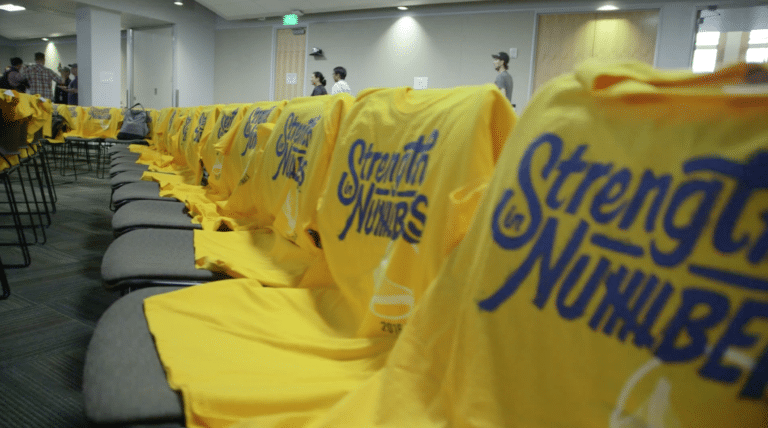
One of the lessons we’ve taken from developments in the VR world is the size of the opportunity. VR will apply across varied use cases in commerce, enterprise, education, entertainment and sports.
The latter was our focus at last night’s VRARA SF chapter event. Featuring GoPro and the Golden State Warriors, we went deep on the state of the union and future vision (excuse the pun) of VR in sports.
Chicken & Egg
Panning back, all the innovation in capturing live action like sports, aligns with the VR marketplace’s overall need for more content. This is the classic “chicken & egg” challenge, usually involving the interplay of content and consumer adoption.
But it’s also important to specify the types of content that populate VR libraries. There’s high-production cinematic content and graphical renderings (like games), but also live action (non scripted) content like sports.
GoPro’s Kevin Custer showed us how the company is cultivating both through lots of innovation around VR mounts. This includes the recently launched Omni as well as the higher-end Odyssey that was developed in partnership with Google and Jump.
Through this, GoPro addresses a wide swath of the market — everything from consumers to professional videographers and adventure seekers. And on the high end, broadcasters and filmmakers will use custom GoPro VR mounts to create narratives.
Coexist
On to the Golden State Warriors, we were lucky enough to have the team’s digital marketing lead Kenny Lauer… right in the middle of the NBA Finals. Meanwhile, the team has been the most adoptive professional sports organization when it comes to VR.
The Warriors dipped their first toe in the VR water with a live broadcast of this season’s home opener and ring ceremony. But it won’t stop there if Lauer’s vision for VR is any indication. And he’s fortunate to have such tech-forward team ownership.
Lauer’s aspirations include multiple vantage points, spatial audio, commentary, and personalized graphics/statistics. And its important to note that it’s complimentary rather than competitive to traditional broadcasts. Think: add-ons to things like NBA League Pass.
That interplay and co-existence with 2D broadcast is key, and is why broadcast interests like Turner are showing lots of excitement and investment in VR. In fact, live sports is broadcast and cable’s saving grace against cord cutting. VR could amplify that advantage.
Strength in Numbers
But most of all, VR aligns nicely with the team’s motto “Strength in Numbers.” More of a team ethos than a slogan according to Lauer, it works on many levels. Referring originally to the depth of talent, it also represents the famously loud and present fan base at home games.
But VR also grows Warrior Nation by bringing immersive experiences to more fans. We’re talking Bay Area fans but also expatriated or new fans across the globe who don’t get to see the team live. Bringing it to them also engenders cash cows like Jersey sales.
And this will all be a glimpse into VR experiences in other sports. It works great in basketball because of the pace, action level and relatively small size of the court. For the same reason, Lauer sees it thriving in all sports, but especially hockey and tennis.
As far as a timeline, the entire discussion is ripe for sporting cliches about emerging technologies (i.e. “we’re in the first inning.”). Lauer resisted the temptation while characterizing the potential and level of excitement at all levels of the Warrior’s organization.
“This isn’t the end, and it’s not the beginning,” Lauer said, quoting Warriors owner Peter Gruber. “It’s the beginning of the beginning.”
